
Salvia hispanica, one of several related species commonly known as chia, is a species of flowering plant in the mint family, Lamiaceae, native to central and southern Mexico and Guatemala. It is considered a pseudocereal, cultivated for its edible, hydrophilic chia seed, grown and commonly used as food in several countries of western South America, western Mexico, and the southwestern United States.

Salvia pratensis, the meadow clary or meadow sage, is a species of flowering plant in the family Lamiaceae, native to Europe, western Asia and northern Africa. The Latin specific epithet pratensis means "of meadows", referring to its preferred habitat. It also grows in scrub edges and woodland borders.
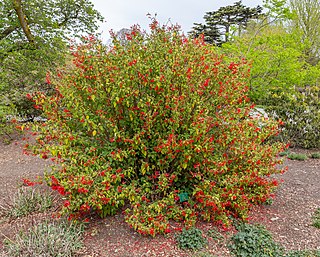
Salvia gesneriflora is a herbaceous perennial plant or subshrub native to mountainous provinces of the Sierra Madre Oriental in Mexico, growing at 7,500–10,000 ft (2,300–3,000 m) elevation. The long tubular flowers of this salvia resemble Gesneria flowers. It is a popular ornamental plant.
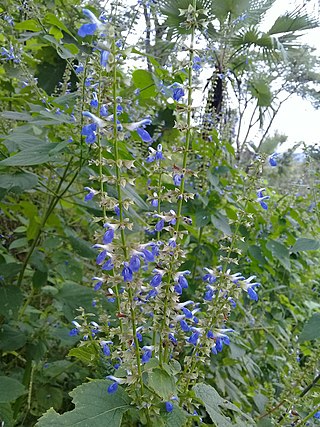
Salvia longispicata is a perennial shrub native to southwestern Mexico, growing between 1,000 and 6,500 feet elevation. The specific epithet "longispicata" gives the impression that the plant has "long spikes", but instead refers to the many projecting clusters of short flowering spikes that resemble small ears of corn.

Salvia tiliifolia is a vigorous, herbaceous annual in the family Lamiaceae that is native to Central America. As a pioneer of abused areas, the plant has spread in modern times into: South America, as far south as Peru and Bolivia; the southwestern regions of the United States, including the states Texas and Arizona; Africa, including South Africa and Ethiopia; China, including the provinces of Yunnan and Sichuan.
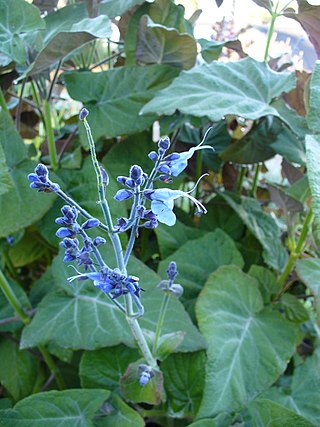
Salvia macrophylla is a perennial undershrub native to Colombia, Peru, and Bolivia. In Colombia it is a rare plant, found growing on roadside banks in the south, at elevations from 1,400 to 2,400 m.
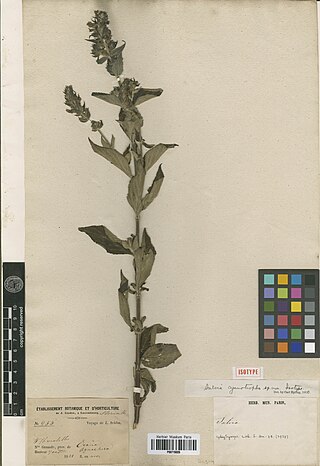
Salvia cyanotropha is a rare and little known perennial Salvia that is endemic to the Ocaña region and the Sierra Nevada de Santa Marta in Colombia. It is found in dryland gullies at 200 to 1,800 m elevation.
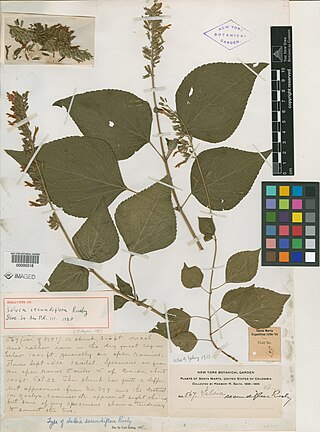
Salvia camarifolia is a perennial undershrub native to the northern and eastern slopes of the Sierra Nevada de Santa Marta in Colombia, growing at elevations from 0 to 1,600 m. There is also past evidence of a specimen from the Ocaña region. S. camarifolia grows 1 to 3 metres tall, with ovate grey-green leaves that are 6 to 12 cm long and 3 to 6 centimetres wide. The red corolla is 1.5 to 2 centimetres long, with subequal lips that are 4 to 5 centimetres.
Salvia melaleuca is a perennial undershrub that is endemic to the north central region of the Eastern Cordillera in Colombia. It is a close relative of S. rubescens, with a villous and much larger corolla than that species. Salvia melaleuca grows approximately 0.5 to 2.5 m high, has a red corolla that is 3.5 to 4.5 cm long, with the upper lip typically 9 mm (0.35 in) long but sometimes up to 15 mm (0.59 in).
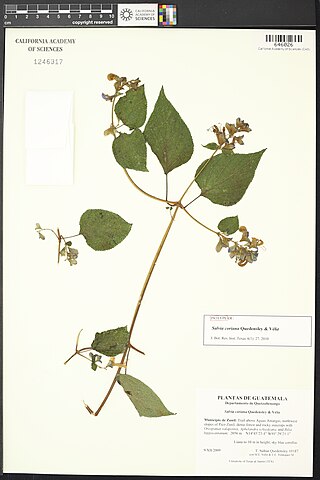
Salvia coriana is a perennial plant that is endemic to tropical cloud forest in Guatemala, growing at approximately 2,000 m (6,600 ft) elevation on the northwestern slopes of Pico Zunil in the Sierra Chuatroj range.

Salvia oxyphora is a herbaceous perennial flowering plant that is endemic to the foothills and lower eastern slopes of the Andes in Bolivia. It is found growing in disturbed rocky slopes above streams in moist subtropical forest at 300 to 2,200 m elevation. It is widespread from the Peruvian border, in the Andean cordillera, to the Santa Cruz area. The plant apparently needs disturbed ground to become established, as it is not found growing in undisturbed areas. In spite of its wide distribution, distinct populations tend to be very small, typically only one to ten plants. Observed plants, both herbarium specimens and wild plants, apparently do not have seeds, possibly due to loss of its native pollinator. For that reason, the wild populations of the plant are vulnerable, though many nurseries carry the plant as of 2012.
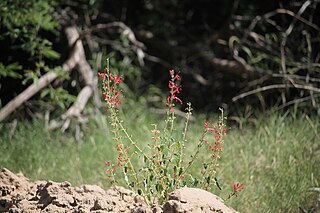
Salvia exserta is an annual herb that is native to the Rio Grande basin in Bolivia, and south into Argentina. It grows in stony ground in dry woodland at 1,300 to 2,700 m elevation.
Salvia personata is an annual herb that is native to valleys and foothills in the Andes of Bolivia and northern Argentina. It grows in disturbed bushy habitat at 600 to 2,600 m elevation.
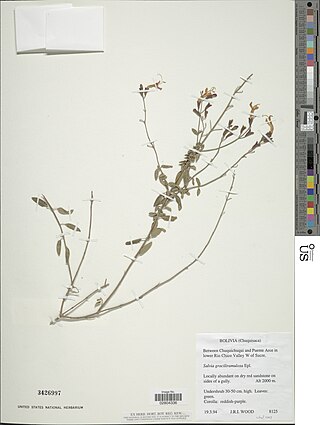
Salvia graciliramulosa is a shrub that is endemic to the Rio Chico valley of Bolivia, growing in red sandstone outcrops at 1,600 to 1,900 m elevation, often growing in colonies on bare slopes.
Salvia orbignaei is an undershrub that is endemic to Bolivia, growing on rocky slopes with other low shrubs at 2,400 to 3,400 metres elevation. It frequently appears following landslides or road building.
Salvia ophiocephala is an annual herb that is endemic to Bolivia—as of 2007 there was only known to be one small colony growing in a Yungas forest valley at 1,200 metres (3,900 ft) elevation. The site is close to settlements and gold-mining, and therefore the plant is considered critically endangered. The specific epithet, ophiocephala, refers to the distinctive teeth in the calyx mouth which hints at the open mouth of a striking rattlesnake. It appears to be related to Salvia personata.

Salvia alba is an annual or perennial herb that is native to southern Bolivia and northern Argentina, growing in the Tucuman-Bolivian forest belt in disturbed areas of semi-shaded moist woodland. In modern times it has been seen growing at 1,000 to 2,100 metres elevation, though there are records of a wider range of growth.
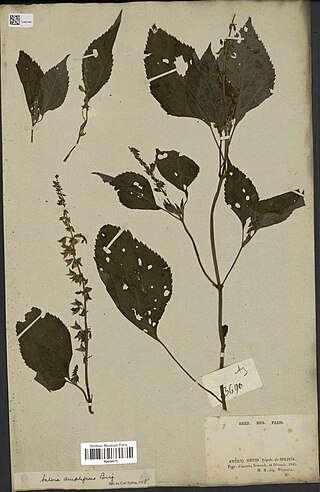
Salvia amplifrons is an annual or short-lived perennial herb that is endemic to Bolivia, growing at 2,650 to 3,000 metres elevation in forest shade on moist ground.
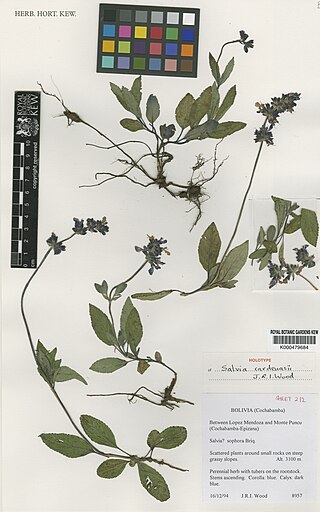
Salvia cardenasii is a rare and endangered perennial herb that is endemic to Bolivia, found in only three small populations, making it vulnerable to grazing animals and other damage. It grows on grassy slopes near rock outcrops, at approximately 3,000 metres (9,800 ft) elevation.
Salvia anatolica is a rare perennial herb that is endemic to a small area between Divriği and Kemaliye in Turkey, growing on stony slopes and oak scrub forest at 1,500 to 1,650 m elevation. It is similar to another Salvia that is endemic to Turkey, S. bracteata.















